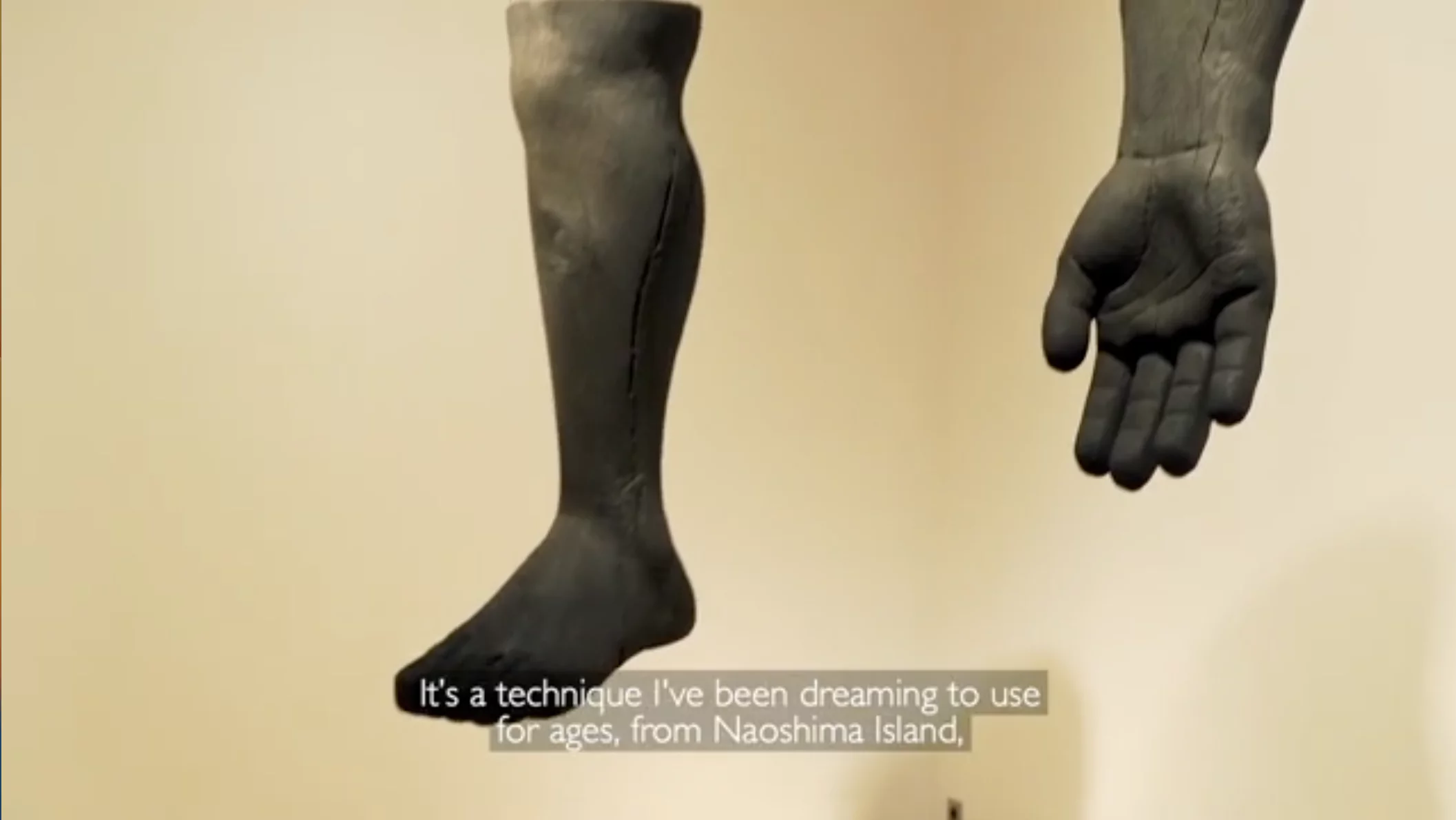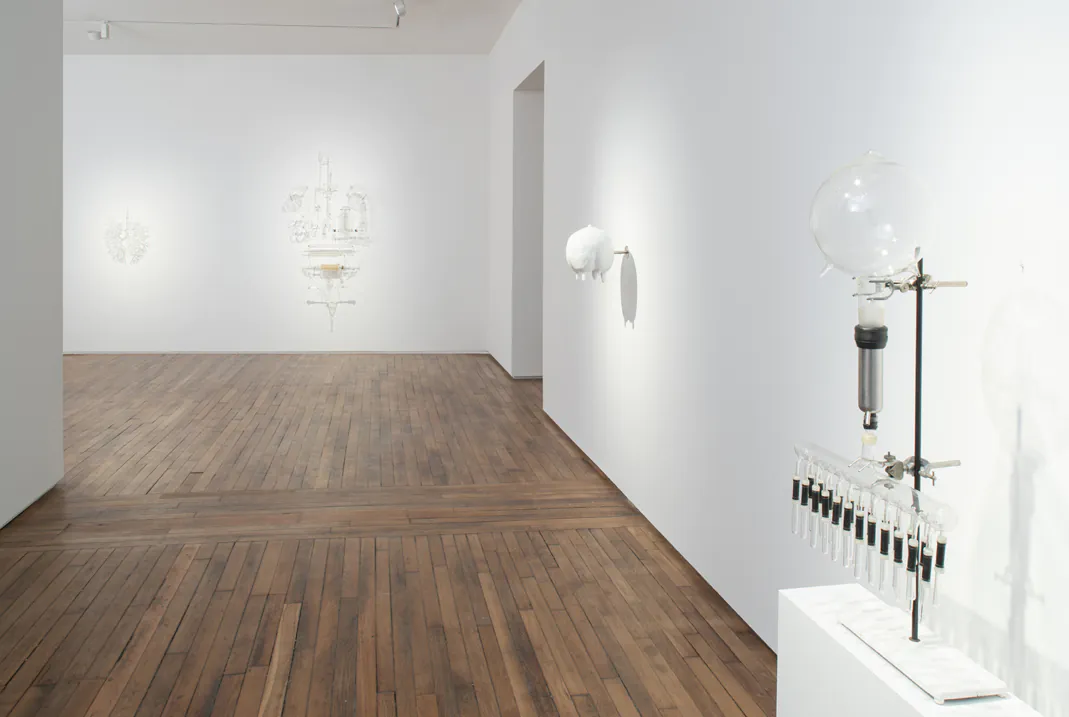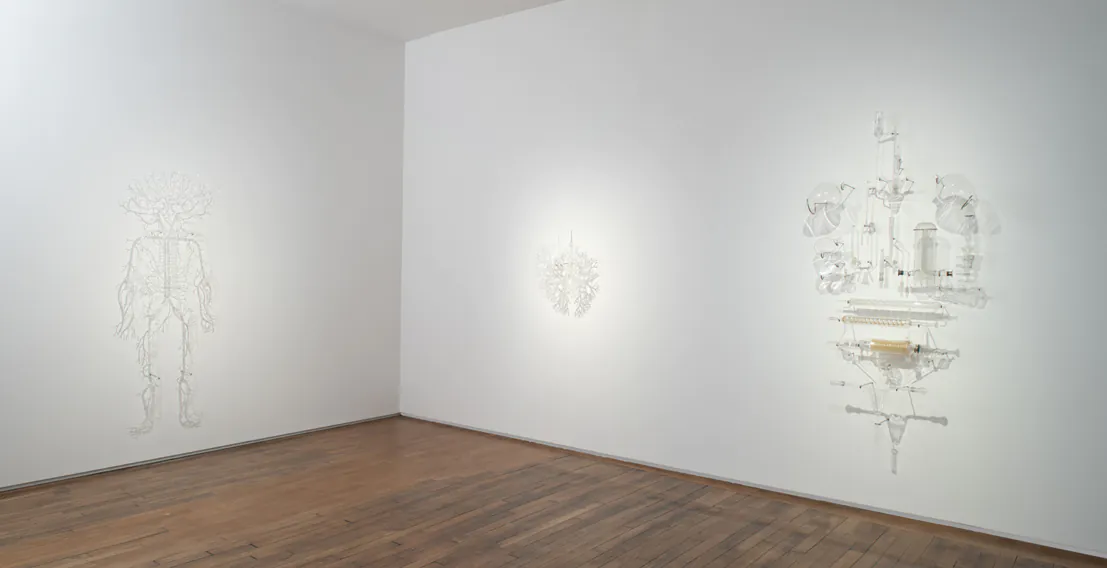
Prune Nourry
Catharsis
Following on from her success at Musée Guimet in 2017, Prune Nourry is taking possession of the Galerie Templon space on Rue Grenier Saint Lazare for the first time with Catharsis.

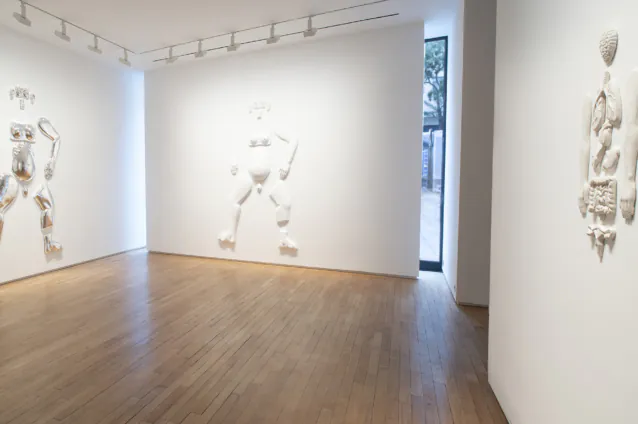

The Catharsis exhibition marks a turning point in the artist’s creative process. For over twelve years, Prune Nourry has been developing powerful and thoughtful multidisciplinary work, exploring the body by questioning gender and hybridisation. She has tended to keep her subject at a distance, remaining as objective as a researcher or anthropologist. Having recently overcome breast cancer, over the course of her treatment the artist felt she was becoming the subject of her own work, a sculpture in the hands of the doctors. With Catharsis, armed with her sculptor’s tools, Prune Nourry reappropriates her body and her femininity, forging an intimate tie between her past explorations and her current life experience.
The sculptures in the exhibition are all marked by their evocation of ex-votos, the popular offerings in the form of an object, limb or organ which represent the feelings of women and men confronted with fear, infertility and sickness, their gratitude for past cures and hopes for future cures. This concept of transferring an emotion to an object can be found in all ages and cultures. To create the pieces for Catharsis, Prune Nourry worked with archaeologists, sociologists and artisans, drawing inspiration from the different shapes and materials used to make these objects.
The exhibition presents several clips from the film Serendipity in which the artist explores the strange connection between her past work and her illness. The film bears witness to her journey, transforming her medical treatment into an epic artistic voyage.
The Amazon appears in the last sequence of Serendipity, a monumental four-metre concrete sculpture with glass eyes, inspired by an ancient marble statue at the Metropolitan Museum of Art representing an injured amazon. Prune Nourry created the sculpture as a cathartic act in her fight against cancer. Inspired by ex-voto traditions, particularly the Japanese mizuko kuyo, the piece is entirely covered in thousands of incense sticks. During a public performance in the heart of Manhattan, the incense went up in smoke, symbolising healing. In the Catharsis show, a miniature bronze sculpture, echoing the monumental sculpture, commemorates this act.
The In Vitro pieces made from laboratory glass and dated 2010 illustrate the serendipity at play in Prune Nourry’s work. These pieces and the intriguing River Woman, created for Glasstress 2019 as part of the Venice Biennale, are contemporary ex-votos where the desire for fertility takes the form of test tubes from medically assisted reproduction centres.
Catharsis allows viewers to share in the hope for the body’s homeostasis and a balanced soul.
The artist
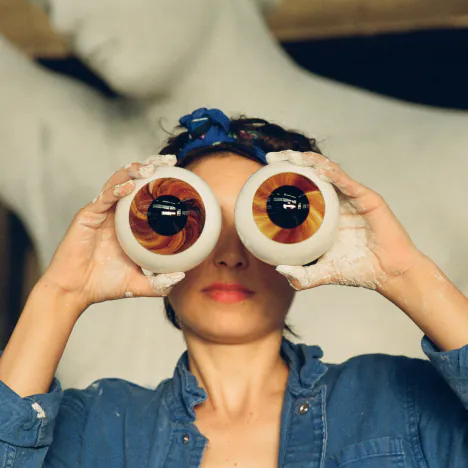
Born in 1985 in Paris, Prune Nourry lives and works in New York. She is interested in the fields of science and anthropology, particularly bioethical questions relating to gender selection and the artificial evolution of humankind. She explores these issues with an artistic approach that combines sculpture, installations, performances and video. Over the last few years, the artist has gained recognition for her long-term projects, such as the Terracotta Daughters army, inspired by the Xi’an terracotta warriors. The piece travelled the world between 2013 and 2015, from Paris to China and taking in Zurich, New York and Mexico City.
